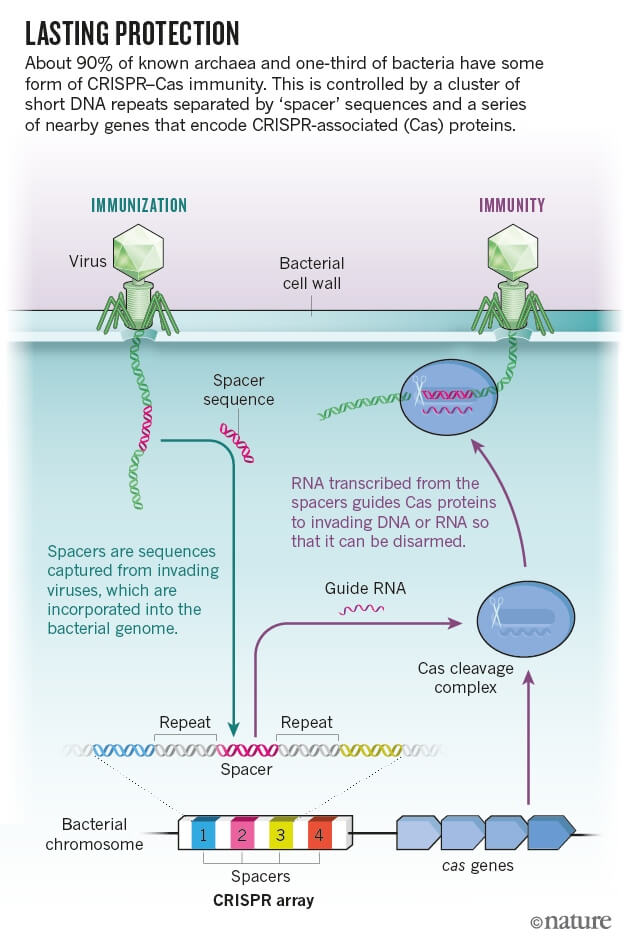…
How does it work?
[V]iral DNA is chemically nearly identical to host DNA. How, in a cell packed with DNA, do the proteins know which DNA to add to the CRISPR–Cas memory?…
Where did it come from?
How did bacteria and archaea come to possess such sophisticated immune systems? That question has yet to be answered, but the leading theory is that the systems are derived from transposons — ‘jumping genes’ that can hop from one position to another in the genome.

What else might it be doing?
The origin of some spacers presents another mystery. Less than 3% of spacers observed so far match any known sequences in DNA databases. It could be a reflection of how little is known about viruses.
…
Why do only some microbes use it?
Whatever other functions CRISPR–Cas has, it is clear that some microbes use it more than others. More than 90% of archaea have CRISPR-based immunity…and no non-prokaryotic organisms…have been caught troubling with CRISPR–Cas at all.
…
How many flavours of CRISPR–Cas exist?
Humans tend to focus on the CRISPR–Cas9 system,…but microbes don’t play favorites…Researchers have officially recognized 6 different types of CRISPR system, with 19 subtypes.
The GLP aggregated and excerpted this blog/article to reflect the diversity of news, opinion, and analysis. Read full, original post: Five big mysteries about CRISPR’s origins































